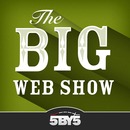Designers can either become drivers of business within their organizations, or they can create the businesses they want to drive. We’re entering an era of design entrepreneurship, in which some designers are realizing that they’re not just a designer employed by a business; they’re creative business people whose skill set is design.
—The State of UX in 2024
The quotation above is from a report at trends.uxdesign.cc subtitled “Enter Late-Stage UX.” It is an important thought. And if it seems like a new one to designers in their first decade of work, it will feel quite familiar to to those of us who earned our merit badges during the 1990s and 2000s. See, for instance,
When You Are Your Own Client, Who Are You Going To Make Fun Of At The Bar?
by Jim Coudal (2005),
Starting a Business: Advice from the Trenches
by Kevin Potts (2003), and
THIS WEB BUSINESS, Part One
by Scott Kramer (2000, one of four terrific ALA articles by Scott on that subject).
That widespread, intoxicating entrepreneurial impulse led to a cornucopia of internet content and products (and, eventually, “real-world” products, too). Some flopped. Some flowered for a magical season (or twelve), and then faded as times and the market changed. Some grew and grew, growing communities with them. A few changed the world, for better or worse. (And, occasionally, for both.)
History repeats, but it also changes. If flying from your corporate perch feels like your best response to an industry where the idealism that led you to UX feels somewhat beside the point, go for it! —But first, check your bank balance, and talk with family, friends, and a business advisor, if you have one.
Trusting my ability to use design and words to say something original enabled me to work for myself (and with partners) from 1999–2019, and it was good. Financially, running independent businesses is a perpetual rollercoaster, and it can crush your soul if your beloved creation fails to connect with a community. Some people exit rich. Others just exit. “Don’t burn any bridges” is a cliché that exists for a reason. But I digress.
“Consider entrepreneurship” is but one piece of useful advice in this year’s excellent State of UX report by Fabricio Teixeira and Caio Braga, with deeply clever illustrations by Fabio Benê and significant contributions from Emily Curtin (God bless the editors!) and Laura Vandiver.
I invite you to read and bookmark the whole thing. I plan to reread it several times myself over the next weeks. It’s that deep, and that good. Hat tip to my colleague Jill Quek for sharing it.
Read: The State of UX in 2024.







